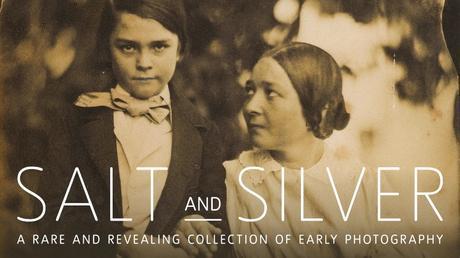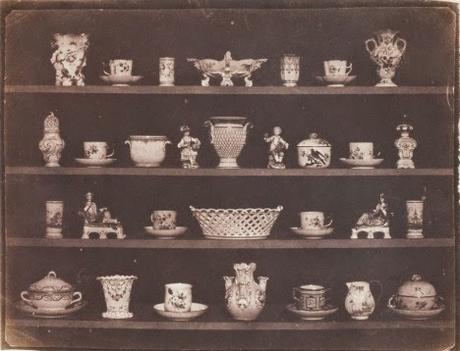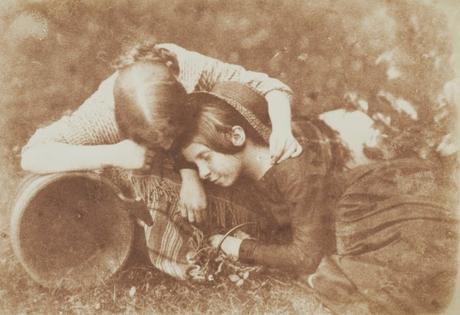
This is the first exhibition in this country dedicated to salted paper prints, the earliest form of photography, showing a collection of beautiful moments of nineteenth century life. As I originally come from a town close to Lacock in Wiltshire, I was aware of Henry Fox Talbot and his contribution to the birth of photography, but it was such a pleasure to see not only his prints but those of other pioneers in the art...

The Study of China (1844) Henry Fox Talbot
Split over four rooms, it charts the steady growth in the use of photography through the use of light-sensitive paper coated in silver salts. The process was that the paper turned black where the light hit the paper, capturing the image in reverse, then the image was shone through with sunlight to another piece of prepared paper producing the 'positive' print. This grew up at the same time as Louis Daguerre was producing his 'daguerreotypes' on silver plates. What made the salt prints more 'artistic' or subtle was the softened combination of light and shade. It wasn't long before others were producing salt prints and one of the first was the Edinburgh photographic studio of David Octavius Hill and Robert Adamson...
Newhaven Fishermen (1845) D O Hill and R Adamson
The prints are remarkably small, when compared with the large scale works of Julia Margaret Cameron (which I am more familiar with these days), and each one seems a treasure, a little window into the past. The images of everyday life, the buildings and urban landscape of the mid nineteenth century were fascinating and touching. I think the one that moved me the most was the seemingly innocuous image of an ox cart, in front of a house with white crosses daubed on the wall, to indicate contagious disease...
Ox Cart, Brittany (1857) Paul Marès
I love seeing photographs of Victorians, and there are some beautiful nudes in the last room, including this one...
Mariette (1855) Nadar
I think what struck me most about the people in the pictures was that they were so real. The nudes especially were not glamorised in anyway, and you get the lovely lass, lady-garden and dimpled knees and everything. Even the staged images of the children still had a realism, a spontaneity that is notoriously lacking in a great deal of traditional Victorian photography.
Margaret and Mary Cavendish (1843-48) D O Hill and R Adamson
It is a unique opportunity to see the birth of something we take for granted these days, and see how modern our ancestors could be. This exhibition was one of the quietest, most powerful exhibitions I've seen for ages and I thoroughly recommend a visit.For further information and tickets to Salt and Silver, see here.
To take a photographic course in Lacock, using the pioneering processes, see here.

